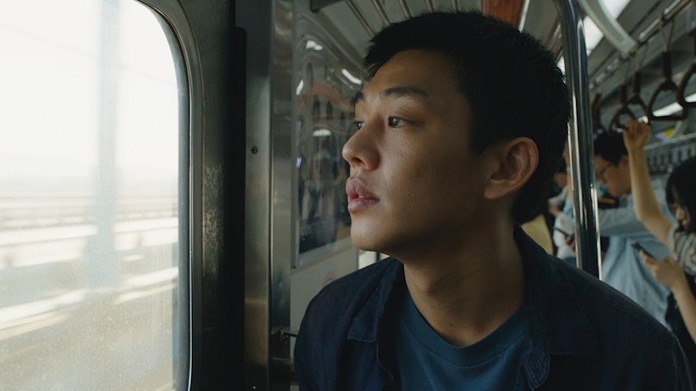
Burning
Studio: Well Go USA
Directed by Lee Chang-dong
Oct 24, 2018
Web Exclusive
![]()
“It’s a metaphor.”
When the ramifications of a single, seemingly throwaway line of dialog, become clear in Lee Chang-dong’s Burning it achieves a chilling effect that is rarely achieved in cinema. And it does so without a single moment of expository explanation beyond what is seen on screen. It is the epitome of “show, don’t tell,” and is an example of why this film is one of the absolute best to hit the festival circuit in 2018.
Jongsu reconnects with Haemi, a girl he knew in childhood, and they start a romance before she leaves for Africa on vacation. She asks him to look after her skittish cat while she’s gone. Meanwhile, he’s moved back into his family’s farmhouse (with one cow) near the border between South and North Korea when his father goes on trial for assaulting a civil servant. His days are filled by looking after the cow, Haemi’s cat, seeking signatures for a petition for leniency in his father’s sentencing, and passing out on the couch while watching television until Haemi calls him to pick her up from the airport. There, she introduces him to Ben (Steven Yeun) who turns out to be her filthy rich new boyfriend she met while in Africa. Something about Ben seems immediately suspicious, though it’s possible that this stems entirely from the film being told through Jongsu’s perspective. Is he simply jealous or is Ben as untrustworthy as Jongsu believes him to be.
Based on Haruki Murakami’s short story Barn Burning, Lee’s film captures the surreal magic feeling of Murakami’s work from the very beginning. While Burning never dips its toes into the magical fantasies of novels like The Wind-Up Bird Chronicle or Hard-Boiled Wonderland and the End of the World, it also feels like the reality within it is tilted slightly on its head. Very slightly, just enough to keep the tone off-kilter to suggest that something is wrong long before it actually is. Perhaps this means that life is always on the verge of disaster, both great and small.
One of the greatest beauties of Burning – aside from the beautiful photography of cinematographer Hong Kyung-pyo – is that its story beats are almost all implied. It’s not quite a silent movie, there is plenty of dialog between Jongsu, Haemi, and Ben, but, as Jongsu discovers, the literal is not always the correct way to interpret things. This is fueled by his confusion after Ben reveals to him, while Haemi is sleeping, his habit of burning down greenhouses, something he says he does every two months or so and is due to burn another. Ben tells him he’s got one picked out and it is close by to Jongsu’s house. For days, maybe weeks, Jongsu navigates the countryside looking for evidence of Ben’s handiwork only to find nothing.
Storytelling as a theme is central to the narrative at play. Jongsu is an aspiring novelist, but can’t figure out what kind of story he wants to tell. He loves William Faulkner (who also has a short story called Barn Burning), but can’t seem to find the appropriate inspiration for his own writing. The closest he comes to writing fiction, is the description of his father as a “friendly neighbor” in the petition to local farmers, which is pointed out to be a falsehood. Haemi talks about falling down a well as a child in what may or may not be true. Ben’s tale of burning greenhouses, likewise, doesn’t appear to be quite what it seems.
Burning is a remarkable film that never resorts to easy answers or holding the audience’s hand in doling out its information. But that doesn’t mean it’s dense or even abstract. Burning is simply quiet and demanding your rapt attention. Lee’s film earns that.
Author rating: 9/10
Average reader rating: 2/10
Current Issue

Issue #72
Apr 19, 2024 Issue #72 - The ‘90s Issue with The Cardigans and Thurston Moore
Most Recent
- Maggie Rogers @ House Of Blues, Chicago, US, April 19, 2024 (Review) —
- 10 Best Songs of the Week: Nilüfer Yanya, Linn Koch-Emmery, Fat Dog, Crumb, St. Vincent, and More (News) —
- Fat Dog Announce New Album and Tour, Share Video for New Song “Running” (News) —
- The Obsessed, Howling Giant @ Brooklyn Meadows, NYC, April 12, 2024 (Review) —
- Premiere: Slow Joy Releases New Single and Video for “King Cowboy” (News) —

Comments
Submit your comment
There are no comments for this entry yet.